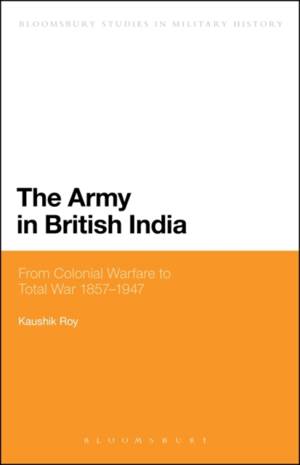
- Afhalen na 1 uur in een winkel met voorraad
- Gratis thuislevering in België vanaf € 30
- Ruim aanbod met 7 miljoen producten
- Afhalen na 1 uur in een winkel met voorraad
- Gratis thuislevering in België vanaf € 30
- Ruim aanbod met 7 miljoen producten
Zoeken
€ 322,45
+ 644 punten
Uitvoering
Omschrijving
The army in India was the principal pillar of British power in South Asia from the mid-nineteenth century until Indian independence. This volume aims to evaluate the combat effectiveness of the army in British India from the mutiny of 1857 until the British departed India in 1947. It examines how the army in India developed from a colonial police force into one of the world's largest volunteer armies which saw service around the globe. The author presents new primary material from international archival sources and develops original interpretations of the political and military role of the army in colonial India. These new arguments include: the army's conduct of 'small wars' on the North-West frontier aided it in conducting tactical warfare in Burma during World War II; small unit raids developed in India were put to good effect beyond India's borders; the army's practical experience of counter-insurgency was used in Greece and Indonesia after 1945; and, contrary to existing scholarship, the British did not follow a deliberate policy of 'Indianization' of the officer corps .
Specificaties
Betrokkenen
- Auteur(s):
- Uitgeverij:
Inhoud
- Aantal bladzijden:
- 256
- Taal:
- Engels
- Reeks:
Eigenschappen
- Productcode (EAN):
- 9781441177308
- Verschijningsdatum:
- 17/01/2013
- Uitvoering:
- Hardcover
- Formaat:
- Genaaid
- Afmetingen:
- 157 mm x 239 mm
- Gewicht:
- 521 g

Alleen bij Standaard Boekhandel
+ 644 punten op je klantenkaart van Standaard Boekhandel
Beoordelingen
We publiceren alleen reviews die voldoen aan de voorwaarden voor reviews. Bekijk onze voorwaarden voor reviews.








